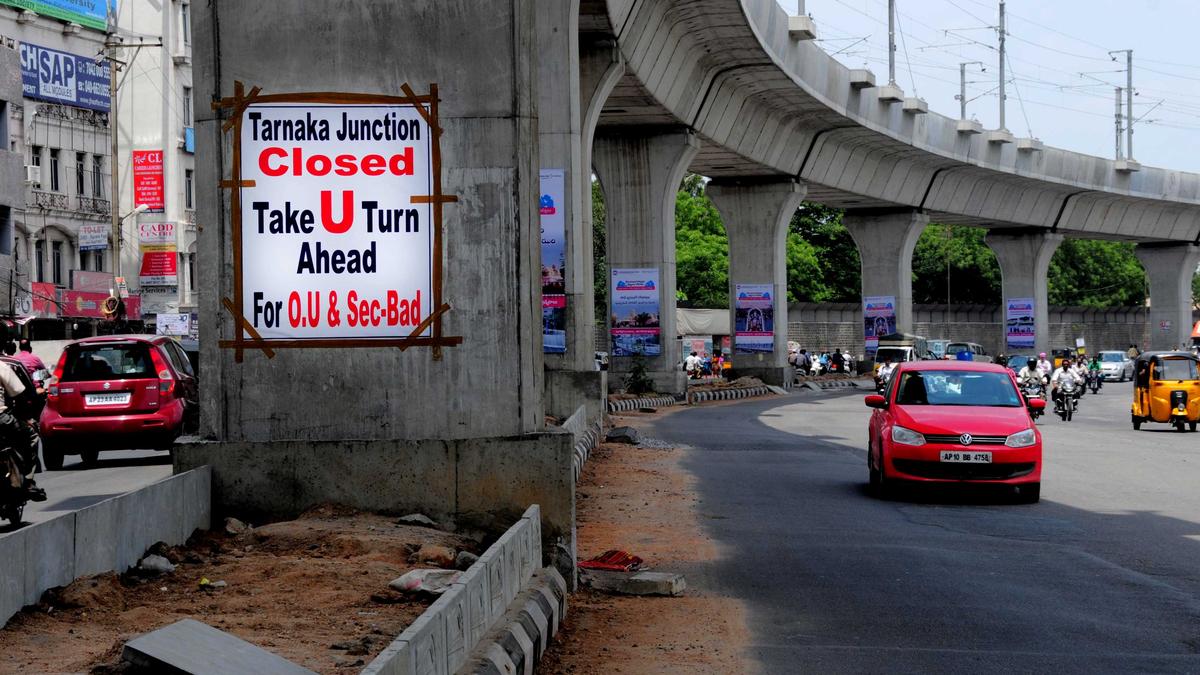
Tarnaka junction: decade-long wait ends, but will traffic flow or stumble?
The Hindu
Tarnaka Junction set to reopen in March after years of closure, addressing traffic issues for smoother commuting.
After nearly a decade of closure, the Tarnaka Junction is set to reopen to the public in the first week of March. The decision comes after persistent efforts by local residents, who urged the Greater Hyderabad Municipal Corporation (GHMC) to address the long-standing traffic woes in the area. However, local traffic police officers opined that this might extend the travel time by waiting at the signals under the flyover.
The congestion at Tarnaka Junction has not only made commuting a challenge but has also led to frequent minor accidents, especially during the morning and evening rush hours, said Vikrant Kumar, a resident of Tarnaka. “Even outside peak traffic times, the constant blaring of horns has become a familiar sound in the area,” he said.
For years, commuters have endured lengthy detours and congested routes, as the nearest U-turns were located nearly a kilometre away on either side. The reopening of the junction, particularly the U-turn under the Tarnaka flyover, will provide a much-needed direct route for those travelling from Osmania University Road towards Lalapet and Moula Ali.
Interestingly however, Nallakunta Traffic SI Niranjan said that while reopening of Tarnaka Junction will reduce travel distance, it may not necessarily cut down travel time. “The waiting time at the junction will be a new factor, as it is a four-way junction with four right turns, four left turns, and four straight routes. Once reopened, only two directions will be allowed at a time—for instance, traffic between Lalapet and Osmania University (OU) will be open while the other directions remain halted. The waiting time at signals is expected to be around 80-90 seconds, depending on the traffic flow,” he explained.
Previously, with the junction closed, vehicles moved continuously without stopping, taking U-turns instead, he said, adding that this constant movement helped maintain a steady flow, which may now change.
“The presence of metro pillars beside the flyover adds another challenge, as maintaining smooth traffic movement will require extra caution. Particularly, vehicles curving from OU towards Mettuguda must navigate carefully to avoid the metro pillars. Ambulance movement might also be affected due to potential slowdowns at the junction,” he added.
The traffic police also said that the most impacted routes will be the Lalapet-Moula Ali stretch and the OU-Sitaphalmandi stretch, as areas like Mettuguda and Uppal benefit from an existing flyover. “To manage the increased traffic, additional officers will be deployed at the junction. Currently, only one officer is stationed there, but at least three will be needed once it is fully operational,” said an officer from the Nallakunta Traffic police station.













